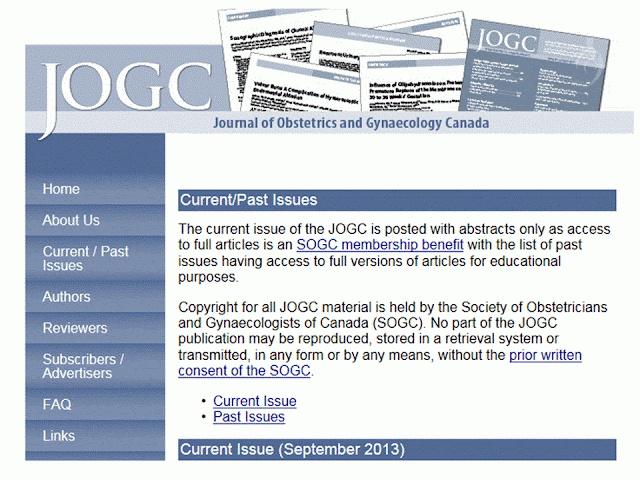Xem CA 161: VAGINAL LYMPHANGIOMA
Xem BÁO JOGC
Tổng số lượt xem trang
Thứ Sáu, 13 tháng 9, 2013
Thứ Hai, 9 tháng 9, 2013
NHÂN CA THAI NGOÀI TỬ CUNG SAU PHÚC MẠC @ MEDIC
http://m.tuoitre.vn/tin-tuc/Chinh-tri-Xa-hoi/Chinh-tri-Xa-hoi/Song-khoe/195009,Noi-soi-thanh-cong-ca-thai-ngoai-tu-cung-hiem-gap.ttm
Xem CA 208 RETROPERITONEAL EXTRAUTERINE PREGNANCY
Xem CA 208 RETROPERITONEAL EXTRAUTERINE PREGNANCY
Discussion
Ectopic pregnancy occurs when the fertilized ovum becomes
implanted in tissue other than the endometrium. Most ectopic pregnancies are
located in the ampullary segment of the fallopian tube. However, they may also occur
within the interstitial portion of the fallopian tube, in the uterine cervical
canal, between the leaves of the broad ligament, within the ovarian cortex, or
on the peritoneal surface (abdominal pregnancy) [1].
In very rare cases,
the abdominal pregnancy may be retroperitoneal.
The incidence of abdominal pregnancy has been variously reported as between one per 3,372 births and one per 7,931 births [2]. Abdominal pregnancies are classified as either primary or secondary. Most abdominal pregnancies probably originate as tubal or ovarian pregnancies that rupture into the peritoneal cavity, where they implant for a second time (hence, the term “secondary abdominal pregnancy”) [2]. Only a very small fraction of the reported cases meet the three criteria for primary abdominal pregnancy established in 1942 by Studdiford: normal tubes and ovaries, absence of uteroperitoneal fistula, and pregnancy related exclusively to the peritoneal surface and diagnosed early enough to exclude the possibility of secondary implantation after primary nidation elsewhere [3].
The incidence of abdominal pregnancy has been variously reported as between one per 3,372 births and one per 7,931 births [2]. Abdominal pregnancies are classified as either primary or secondary. Most abdominal pregnancies probably originate as tubal or ovarian pregnancies that rupture into the peritoneal cavity, where they implant for a second time (hence, the term “secondary abdominal pregnancy”) [2]. Only a very small fraction of the reported cases meet the three criteria for primary abdominal pregnancy established in 1942 by Studdiford: normal tubes and ovaries, absence of uteroperitoneal fistula, and pregnancy related exclusively to the peritoneal surface and diagnosed early enough to exclude the possibility of secondary implantation after primary nidation elsewhere [3].
Our case meets these criteria apart from the fact that
implantation occurred in the retroperitoneal space rather than in the
peritoneal surface.
Reported sites of primary abdominal pregnancy are the pouch
of Douglas, posterior uterine wall, uterine fundus, liver, spleen, lesser sac,
and diaphragm [2].
Ectopic pregnancy, a known complication of in vitro fertilization–embryo
transfer (IVF–ET), has increased in frequency due to the nationwide proliferation
of IVF–ET programs. As ectopic pregnancies become more common, so too do
reports of unusual implantation sites including the retroperitoneum [4]. Two mechanisms
may account for the retroperitoneal location of an ectopic pregnancy in IVF–ET
patients: spontaneous retrograde migration of the embryo after intrauterine
transfer and uterine perforation with unintended retroperitoneal or intraabdominal embryo placement at the time of
transfer [4]. However, our patient had undergone IVF–ET, and there was no evidence of tubal rupture or uterine perforation
found at surgery.
There have been very few reports of retroperitoneal ectopic
pregnancy in the absence of IVF–ET [5–7], and it is difficult to explain how
these rare implantations occur. However, several theories have been proposed.
Dissemination of cells or tissue fragments through vascular
channels, as in the case of trophoblastic diseases, typically terminates in pulmonary
tissue, whereas dissemination of endometrial cancers through lymphatic channels
leads to metastases in the periaortic and portal hepatic nodes [8]. Hall et al. [9] suggested that the
fertilized ovum reaches the retroperitoneal space via the lymphatic system because they found lymphatic tissue together with the
ectopic mass. Another explanation is that the embryo implants on the posterior peritoneal surface in the first instance and reaches a
retroperitoneal position by subsequent trophoblastic invasion through the peritoneum
[4].
In summary, we have presented a rare case of retroperitoneal
pregnancy. Retroperitoneal location probably involved
spontaneous retrograde migration of the embryo after intrauterine
transfer or intraabdominal embryo placement at the time of
transfer .
Đăng ký:
Bài đăng
(
Atom
)




